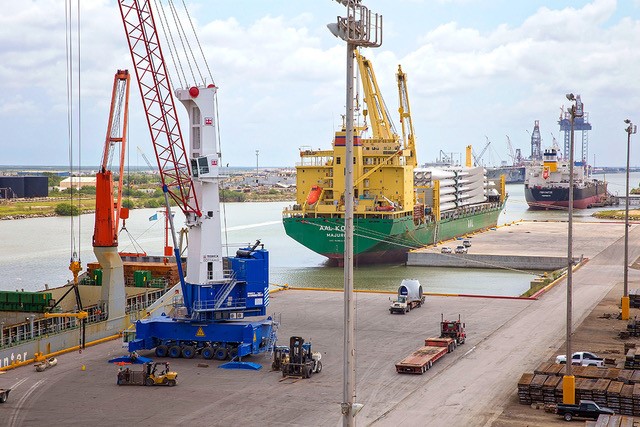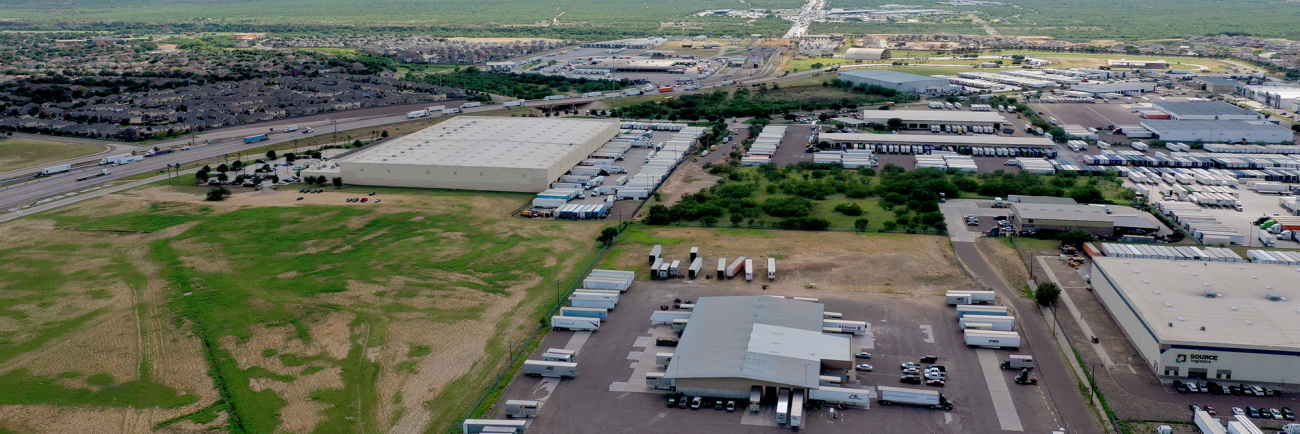
24 Jan PORT OF BROWNSVILLE Plays a central role for international trade in Rio South Texas Region
The Port of Brownsville is the only deep-water seaport located on the U.S.-Mexico Border. Providing a strategic logistics hub for a host of multinational manufacturing centers across North America. With approximately 40,000 acres of land available for development and 17 miles of waterfront access, the port offers a direct route to non-congested international bridge crossings and rail connections.
Since its establishment in 1936, the communities in the Rio South Texas Region have trusted the port to bring global trade opportunities for businesses and provide good-paying jobs.
The port has earned its reputation as the leading economic engine of the region. The impacts of the port ripple throughout the region touching lives and strengthening communities. Industries at the port continue thriving, creating more than 9,000 jobs for South Texas and generating $3 billion in personal income.
The Port of Brownsville continues to play a central role for international trade in Texas and Northern Mexico, proving itself as one of the most stable seaports in the U.S. to effectively weather today’s unique economic challenges.
The Port of Brownsville handles a wide variety of cargo including:
• Steel products
• Liquid bulk
• Break bulk
• Dry bulk commodities
• Project cargo for the wind energy and space industries
With the facilities and knowledge to handle international cargo, the port facilitates efficient movement of goods between the United States and México.
The Port of Brownsville is a leader in developing economic opportunities, improving the quality of life, creating the best transportation facilities possible, and exhibiting high standards of public administration – all with the goal of making the Rio South Texas Region a great place to live and do business.
The Port of Brownsville is the largest shipper of steel to Mexico. It plays an important part in the energy sector, moving massive wind energy components and refined petroleum commodities. Cargo movement at the port in 2021 amounted to 13.8 million tons, an amount that increased in 2022, and it is projected to increase in 2023.
EXPANDING THE PORT
Currently, the port is working on the Brazos Island Harbor Channel Improvement project which seeks to deepen the ship channel from its current depth of 42 feet to 52 feet. The project will deliver significant navigational safety improvements for commercial shipping in South Texas as well as increase cargo throughput at the port. The BIH project will further increase the port’s capabilities, allowing existing industries in Rio South Texas to continue expanding while also attracting new economic opportunities for the region.
“The completion of the Brazos Island Harbor Channel Improvement Project will not only shape the course of our future but also the economic landscape of the Rio Grande Valley”, said Esteban Guerra, Brownsville Navigation District Chairman.
“Increasing the depth of the ship channel to 52 feet will allow us to receive larger vessels, heavier cargo and contribute to cost savings, setting in motion the next great evolution of the Port of Brownsville.”
The land owned by the port reaches right up to the Río Bravo, in Mexico, which allows the potential for commercial exchange with this country, which already has a track record and history.
The Port of Brownsville is the closest deep-water port to Mexico’s industrial center in Monterrey – more than 100 miles closer than the nearest Mexican port. The proximity to Mexico, the second largest economy in Latin America, uniquely positions the port to serve as a transshipment gateway that delivers goods and materials to nearby multinational manufacturing centers on both sides of the border.
More than 10 million consumers are within a three-hour drive of the port, many of them across the border. Convenient and efficient border crossings are located just seven miles from the port by truck or about 13 miles by railroad at the new West Rail Bridge in Brownsville.
When trucks are a better option, the Port of Brownsville claims conceptual ownership of the state’s first overweight corridor. Trucks crossing the border in either direction utilizing the specially designated route to or from the port, can load to the legal weight limits of Mexico – 125,000 pounds (45,000 pounds heavier than domestic limits). That translates into real savings in both time, money and logistical efficiencies.
SOMETHING THAT DISTINGUISHES THE PORT
As diverse industries at the Port of Brownsville continue their trajectory for growth, it remains competitive, providing the best value. The region’s unique capabilities and skilled workforce have contributed to convert the port into the premier ship recycling port of the U.S. while simultaneously serving as home base to Keppel AmFELS, the only major Jones Act shipbuilding yard in Texas.
The Port of Brownsville is among the top US ports capable of receiving, storing and moving massive components for the wind energy industry, including the largest wind blades in the world measuring 265 feet in length. The port’s great logistical capabilities allow for the safe deliver and transport of these commodities by ship, barge, truck or train. It also servs as the homeport to the space industry in Rio South Texas, facilitating the flow of cargo and other goods from port docks to SpaceX’s neighboring facility Starbase.
If you are interested in learning more about the advantages offered by the services provided by the Port of Brownsville in the Rio South Texas Region, COSTEP’s team of experts is in the best position to help and advise you.
We invite you to visit: www.costep.org or contact one of our representatives for more information at info@COSTEP.org






